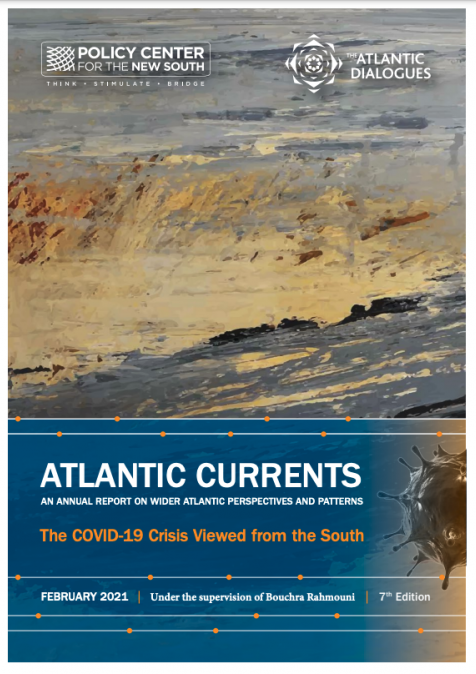RELATED CONTENT
-
 AuthorsApril 12, 2021The COVID-19 Virus and the Liberation of Women It seems not much has changed in almost 400 years since Molière wrote these words in his comedy The school for wives. Male dominance, God-like characters, known as men, united in inexcusable discrimination, sexism, gender inequality, infallible men forever trying to rule the world. “A wife who writes, knows more than can be good for her”, Molière’s main character sighs in the play, insisting that female brightness as a rule “is a bad o ...
AuthorsApril 12, 2021The COVID-19 Virus and the Liberation of Women It seems not much has changed in almost 400 years since Molière wrote these words in his comedy The school for wives. Male dominance, God-like characters, known as men, united in inexcusable discrimination, sexism, gender inequality, infallible men forever trying to rule the world. “A wife who writes, knows more than can be good for her”, Molière’s main character sighs in the play, insisting that female brightness as a rule “is a bad o ... -
 AuthorsSabine CessouApril 9, 2021As a Project Assistant responsible for Speech Writing in the Office of Dr. Ibrahim Mayaki, CEO of the African Union Development Agency-NEPAD, Seleman Kitenge, born in 1989 in Tanzania, is now based in Johannesburg. He was first a volunteer for the African Union (AU) in the same role for one year, before being hired in August 2020 by the AU Development Agency. “I’m enjoying it, he says, some of my mentors are really good”. Among them, Togolani Mavura, Private Secreta ...
AuthorsSabine CessouApril 9, 2021As a Project Assistant responsible for Speech Writing in the Office of Dr. Ibrahim Mayaki, CEO of the African Union Development Agency-NEPAD, Seleman Kitenge, born in 1989 in Tanzania, is now based in Johannesburg. He was first a volunteer for the African Union (AU) in the same role for one year, before being hired in August 2020 by the AU Development Agency. “I’m enjoying it, he says, some of my mentors are really good”. Among them, Togolani Mavura, Private Secreta ... -
April 8, 2021The Atlantic Current’s 7th edition provides a unique overview and in-depth analysis of the COVID-19 pandemic as seen from the Atlantic and the challenges it poses for the region. In this edition, the authors examine how COVID-19 has proved to be a destabilizing force in a wide range of ...
-
March 30, 2021Delve into our fellow Uri Dadush's chapter of our annual flagship publication, the Atlantic Currents Report, through our Columnist Helmut Sorge's questions. The 7th edition of the report entitled “The COVID-19 Crisis as seen from the South Atlantic” echoes last year’s special online edi...
-
AuthorsPolicy Center for the New SouthFebruary 25, 2021The Atlantic Current’s 7th edition provides a unique overview and in-depth analysis of the COVID-19 pandemic as seen from the Atlantic, and the challenges it poses for the region. In this edition, the authors examine how SARS-CoV-2 has proved to be a destabilizing force in a wide range of sectors such as health, international relations, trade, energy or the economy. This report aims to examine and assess the consequences of the COVID-19 crisis while endeavoring to learn from these n ...
-
 AuthorsSabine CessouFebruary 23, 2021The Covid-19 pandemic has induced a major shift in Carolina Zuheill Rosales’ career. This internal medicine doctor founded Guimedic in 2011, when she was 25. Through its mobile clinics, this NGO provides medical consultations in remote and poor areas throughout Mexico. The main focus is to treat indigenous communities. Because of a structural lack of medical access to these populations, she has launched in March 2020 Promesa, a social business that is using artificial intelligence. ...
AuthorsSabine CessouFebruary 23, 2021The Covid-19 pandemic has induced a major shift in Carolina Zuheill Rosales’ career. This internal medicine doctor founded Guimedic in 2011, when she was 25. Through its mobile clinics, this NGO provides medical consultations in remote and poor areas throughout Mexico. The main focus is to treat indigenous communities. Because of a structural lack of medical access to these populations, she has launched in March 2020 Promesa, a social business that is using artificial intelligence. ... -
 AuthorsSabine CessouJanuary 13, 2021Bright and open-minded, this young American has already achieved a lot at just 28 years of old. Since February 2019, he has been serving as Legislative Assistant to Democratic Senator Liz Lovelett in Olympia, Washington. “Working for a senator whose values I share is really a dream come true,” he says. He sees Liz Lovelett as a role model, since “she leads with her heart and great values, always thinking on how we can infuse equity into everything we do.” Jordan Kronen calls Washin ...
AuthorsSabine CessouJanuary 13, 2021Bright and open-minded, this young American has already achieved a lot at just 28 years of old. Since February 2019, he has been serving as Legislative Assistant to Democratic Senator Liz Lovelett in Olympia, Washington. “Working for a senator whose values I share is really a dream come true,” he says. He sees Liz Lovelett as a role model, since “she leads with her heart and great values, always thinking on how we can infuse equity into everything we do.” Jordan Kronen calls Washin ... -
 AuthorsSabine CessouJanuary 13, 2021Bright and open-minded, this young American has already achieved a lot at just 28 years of age. Since February 2019, he has been serving as Legislative Assistant to Democratic Senator Liz Lovelett in Olympia, Washington. “Working for a senator whose values I share is really a dream come true,” he says. He sees Liz Lovelett as a role model, since “she leads with her heart and great values, always thinking on how we can infuse equity into everything we do.” Jordan Kronen calls ...
AuthorsSabine CessouJanuary 13, 2021Bright and open-minded, this young American has already achieved a lot at just 28 years of age. Since February 2019, he has been serving as Legislative Assistant to Democratic Senator Liz Lovelett in Olympia, Washington. “Working for a senator whose values I share is really a dream come true,” he says. He sees Liz Lovelett as a role model, since “she leads with her heart and great values, always thinking on how we can infuse equity into everything we do.” Jordan Kronen calls ... -
December 23, 2020América Latina está inmersa en una nueva realidad mundial: la convivencia diaria con la pandemia de Covid-19, que ha causado a esta región una de las tasas de mortalidad más altas del mundo. También se enfrenta a una crisis humanitaria cuyas causas son varias, aunque destacan la inestab...
-
December 22, 2020Besides its economic consequences, the fear from contamination, the psychological effects of lockdown and confinement have had and will continue to have significant impacts on the mental health of populations during this ongoing epidemic crisis of Covid-19. The spread of Covid-19 global...



